Built 1854
First Golden Age Hotel
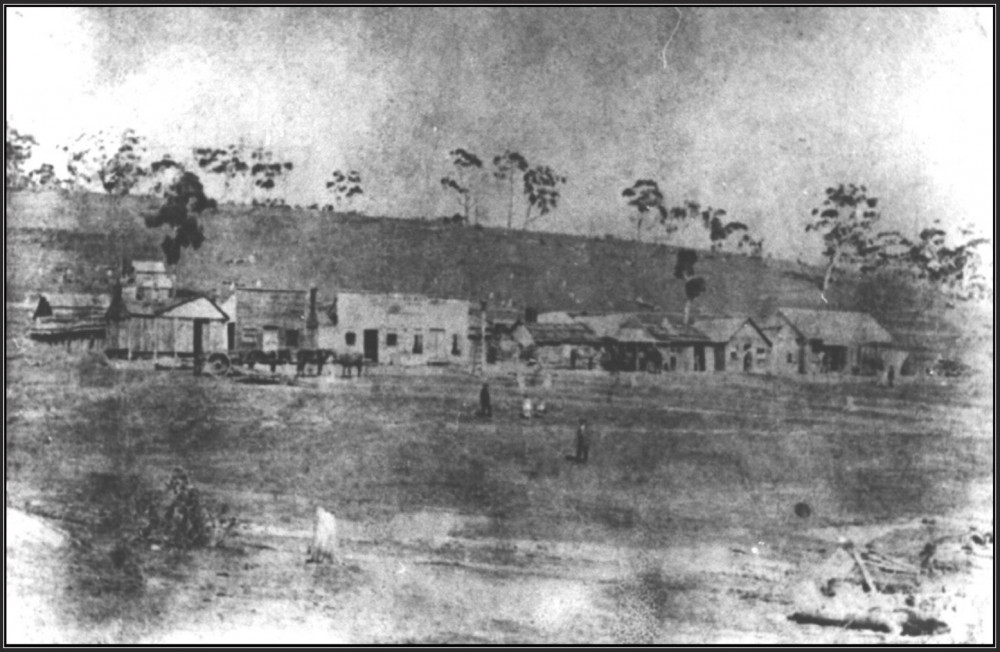
Many hotels were built in Omeo and served locals, tourists and travellers. Most stood only for a few decades. Two hotels are left in the town which once boasted a population of 9000 people. The Hilltop has changed its name three times and the Golden Age Hotel, even though there has been five in all, kept the same name.
The first “Golden Age Hotel” occupied the central position in the main street. It was a timber dwelling with just two doors and four windows. At the rear there was a small log cabin used as residence. Out the front a lantern hung from a post with a rickety ladder leaning against it so it could be lit at night. That was back in 1854.
As the town began to grow, so did the Golden Age. No written history determines what happened to the first hotel ,but a photo of the township dated 1870 clearly shows the Golden Age as a fairly large long timber building situated where the smaller one once stood.
Later in 1870 the second Golden Age burnt to the ground.
Built 1860 - burnt in 1870
The Second Golden Age Hotel (the long building on the right of centre)
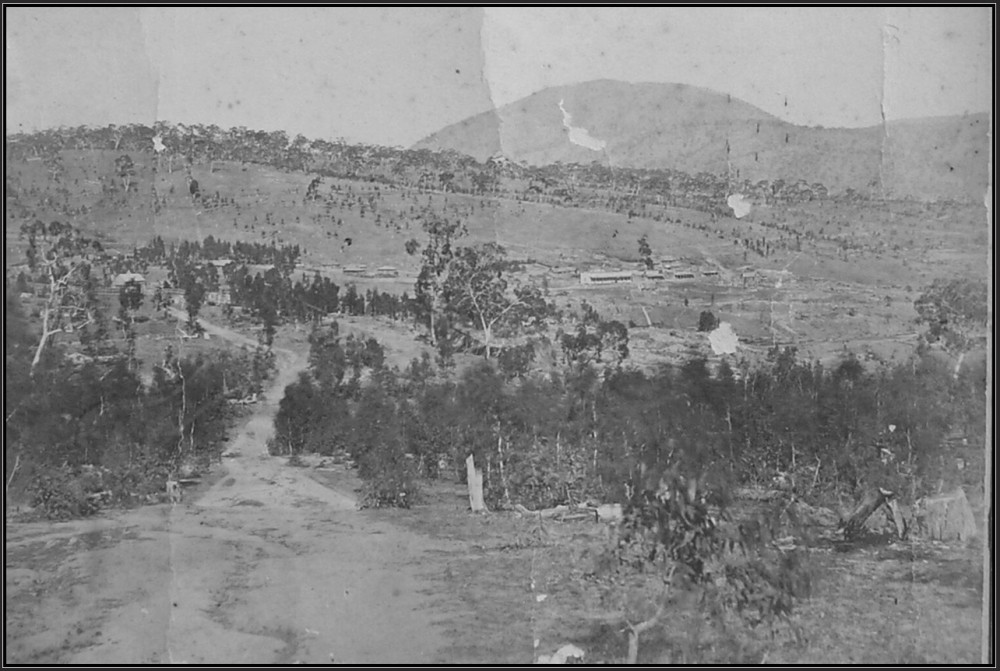
The town was growing rapidly and Mr & Mrs Fregon decided to rebuild. They had Omeo’s first two-storey hotel built. To replace the second hotel and once again called it the same, “The Golden Age”.
The Hotel was used for meetings and there is references to it also being used for hospitalisation of injured people prior to the building of the new hospital. One time was in Nov 1885 when Miss Young, pianist for Mr Fregon was nearly burnt to death through her dress catching fire in the kitchen. She rushed through the house a mass of flames, and a son of Mr. Fregon's followed her with buckets of water, with which he extinguished the fire. She is was laying at the Golden Age Hotel in a very critical state, with Dr. Samson in attendance. She later died from the injuries.
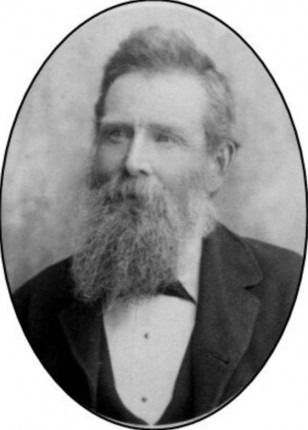
John Fregon - Owner & Licensee
Built in 1872 - burnt in March 1891
The Third Golden Age Hotel (two storey building on right)
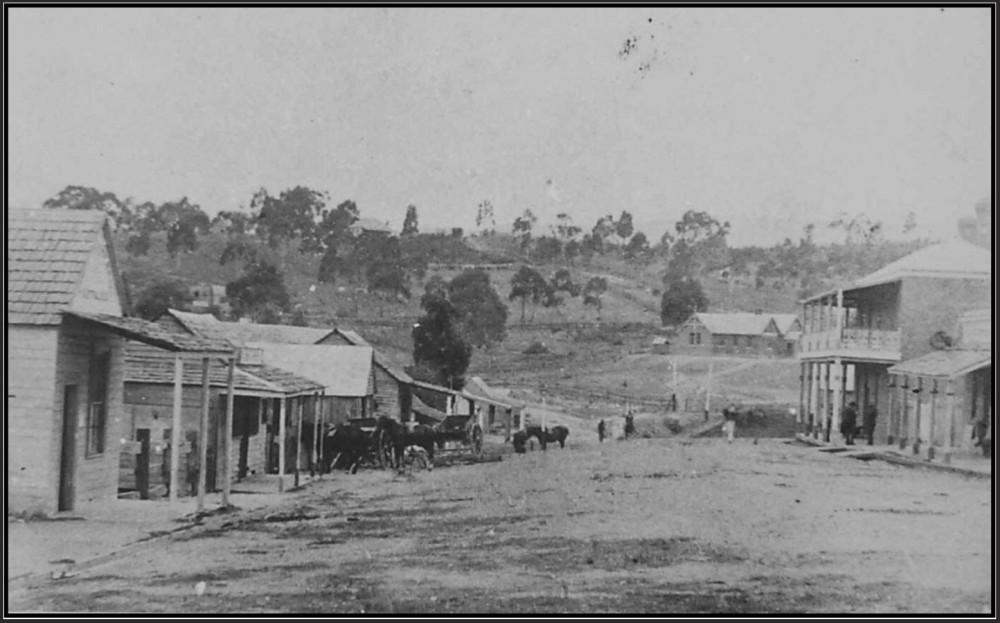
It was in this Hotel on February 17, 1873 that Omeo Shire Council held its first meeting. This same building held many different functions, including a meeting of all local shareholders. The meeting elected Mr Foster as manager, in place of Mr G. H. Junson. It is from this report that history suggests at one stage the lease was owned by a syndicate of local shareholders.
The third Golden Age was destroyed by fire in early March, 1891.
Tuesday 29th May 1888
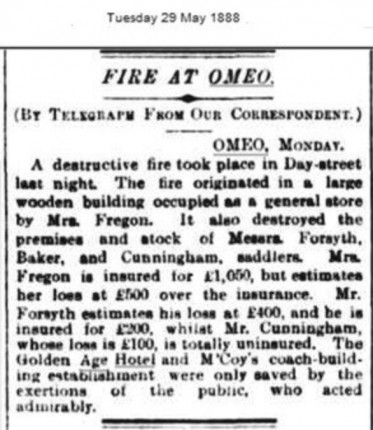
Thursday 13th August 1891
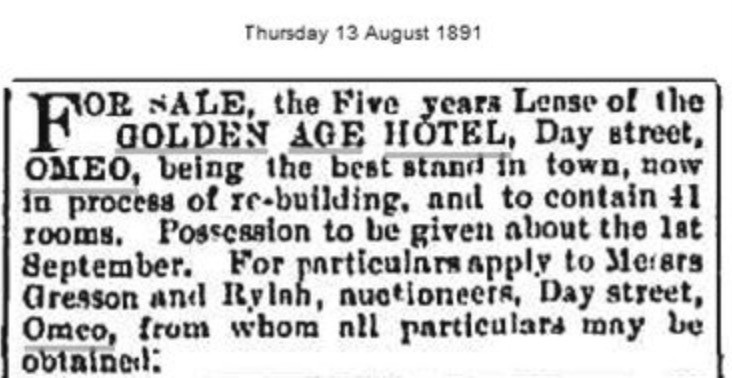
Thomas Easton
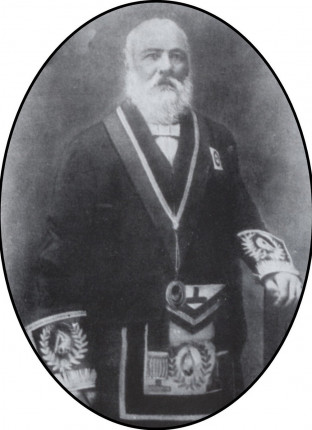
First Shire Secretary - Elected at first shire meeting held at the Golden Age Hotel
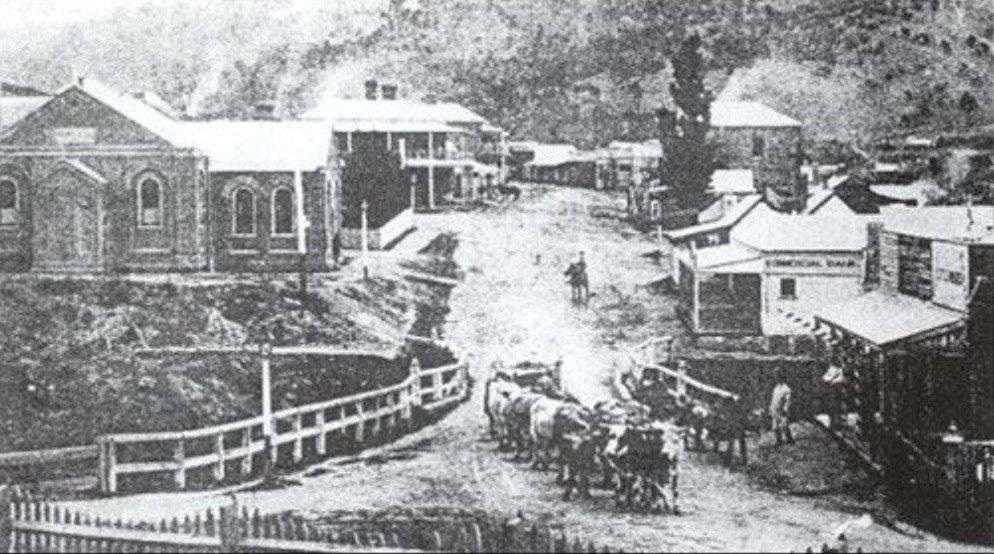
View over Commissioners Gully towards the third Golden Age Hotel
Gippsland Times Monday 9th March 1891
Destructive Fire at Omeo
The Golden Age Hotel, Omeo, a brick building, of some twenty rooms, of which Mrs Treacy is licensee, was totally destroyed by fire early this morning.
The fire appears to have originated in the cook's room, he being absent at the time, and was not discovered till 1 a.m. There being no fire brigade, and the water supply very deficient, all efforts to stay the flames were powerless and several persons in the hotel had narrow escapes, and many lost all their wardrobes.
To prevent the fire from spreading to the premises of Mr Christopher Rogers, where a large amount of gunpowder and in flammable stores are kept, the shop of Miss Tetu, the offices of Mr Conant, solicitor, and Mr Carroll, share broker, were demolished. The total loss is estimated at £4000, and so far as is known, neither the building or the furniture is insured.
Miss Tetu and Messrs Conant and Carroll suffered severely by the hasty removal of their effects, and they also were uninsured. The destruction of the hotel will be a source of great inconvenience for the travelling public, as this only leaves two hotels now in Omeo, and for sometime past owing to the traffic to and from the Mount Wills tin mines all the hotels have been overcrowded.
The hotel was the source of litigation between the curator of intestate estates and the owner, Mr Fregon, who is in Melbourne, and the trial in reference to it comes on for hearing in Melbourne next week.

Bullock Drays were used to bring in the construction materials for the fourth Golden Age Hotel, whilst the bricks were made at the local brick kiln
The 1890’s and the next two decades were the most prosperous in the town’s history. The population was growing by hundreds and it was decided to again rebuild the “Golden Age Hotel”.
To keep the hotel running until the new one could be completed, a small timber building was erected. It comprised six rooms, which were to be the licensed premises as well as a few rooms at the rear for the residence.
The dwelling was completed by December and Thomas Baseley applied to the Licensing Court on December 14,1891 for a licence to operate as the “Golden Age Hotel”.
Built 1894 - burnt Friday 13th 1939
The Fourth Golden Age Hotel
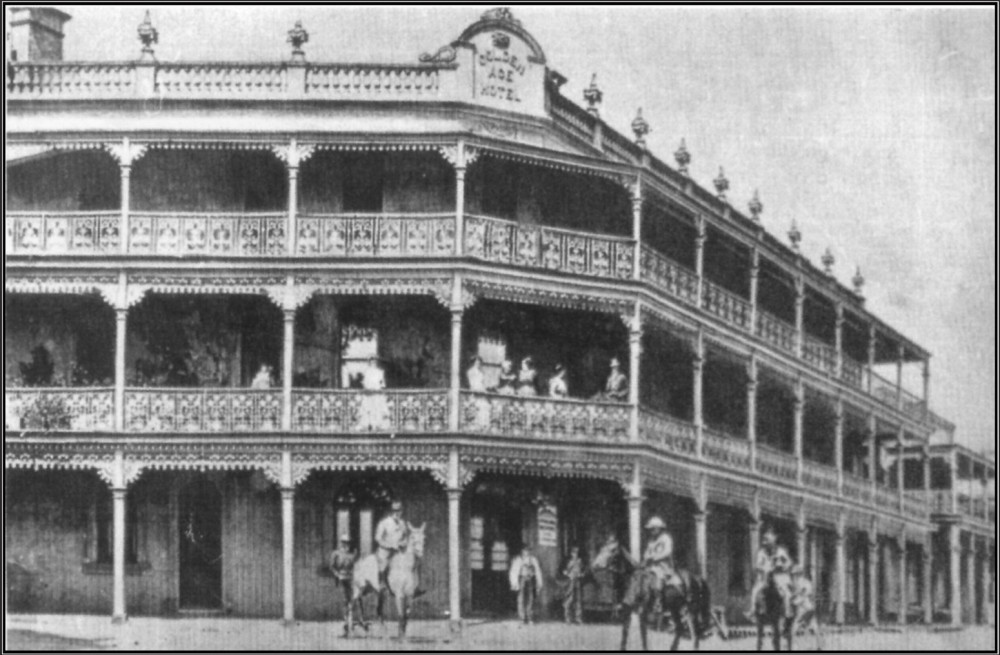
In 1892 work started on the fourth Golden Age. Most of the material was delivered by bullock teams. Month after month and brick after brick, the building started to form some shape. To the amazement of locals and tourists the building kept growing into something they never thought would be seen in Omeo. People were not only amazed how big it was but also how high.
By August 1893 construction was complete. The ground floor and the first floor were opened for business. Mr Geo Woods placed his first advertisement in the Omeo Standard for “first class accommodation”. The new billiard room was now open. In the early months of 1894 the second storey was completed.
In early 1894, the magnificent three storey “Golden Age Hotel” was finally completed. The ground and first floor had opened for business by August 1893.
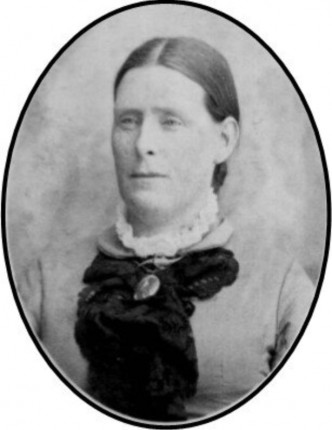
Mrs. Elizabeth Fregon
Mrs. Fregon was responsible for building this beautiful Hotel and her feminine touch was seen throughout the entire building. She leased the premises out, receiving 2500 pounds annually.
The construction took over two years and only the best workmanship was used in the décor. The completion of this new, glamorous building was the start of a new era for the township.
The balconies were ornately trimmed with iron-laced balustrade, supported by turned wooden balusters. The arched windows and doors added a unique appearance to the exterior. Locals had never seen better. Travellers were amazed and tourists thought it wonderful.
The interior was decorated throughout to the elegance of rich. Because of this the hotel was more for tourists than locals. The bar was fitted with a lovely U-shaped counter and the glasses hung from a frame attached to the ceiling.
Golden Age Hotel 1894-1939 Floor Plan
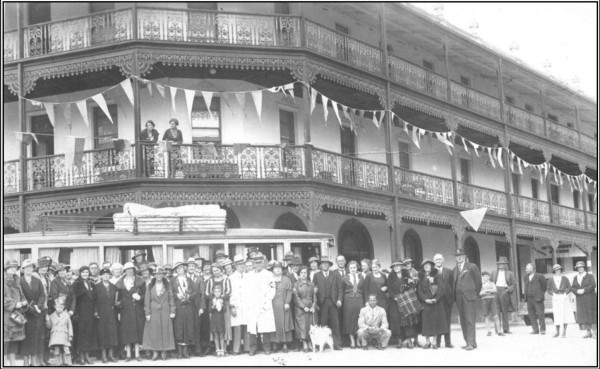
The billiard room, which measured 40ft x 24ft was decorated with ornate concrete pillars centered throughout the room to support the overhead rooms.
The dining room on the ground floor was mainly used for locals and travellers. The large kitchen was fitted with an extra large wood stove and a large fireplace. The copper urn was hung and offered constant boiling water. The kitchen included a lift which operated by a pulley and cable for meals to be lifted to the servery on the first floor. It was also used to return the used crockery to the kitchen.
There was a room for the “boots” and a barber shop. The large store room was across the cartway.
The formal dining room on the first floor was mainly used by the over-night guests and for any formal dinners.
There were also two parlours, a smoke room, eleven bedrooms and the ballroom. It was also 40ft x 24 ft and was the nicest room in the entire building. It was trimmed with beautiful velvet curtains. The room was used for all the major balls held in the town.
On arrival ladies were handed a dance card. It contained a list of all the dances to be played throughout the evening and a dainty pencil was attached by a tassel. When the lady was invited to dance by a gentleman she would insert his name beside the dance they were about to have. The same routine continued throughout the night.
If there was time for a few more dances the lady still entered the gentleman’s name on the reverse of the card and wrote extras. It was from these balls that many of the gentlemen became future husband’s.
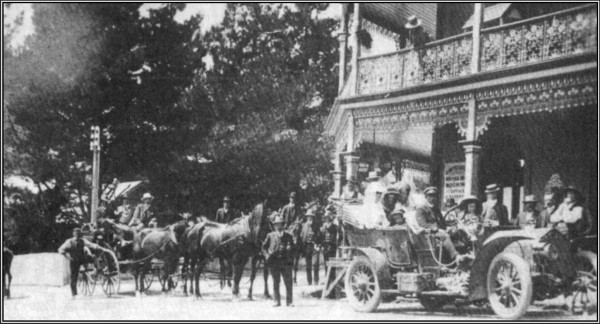
There was also the room called only “Number Eight”. It is believed that after-hours the management invited selected guests to “Number Eight” for an after-hours drink. Law and order in the town was unaware of the room’s existence or if they did they never let on. This floor also included the main lavatory block at the rear of the building.
There was a door at the rear of each closet which opened out onto a platform where the night man would remove the cans and replace them, then descend the stairs with extreme care. There were also six bathrooms shared by all the guests.
The second floor consisted of twenty-nine bedrooms and only one bathroom.
The reason most of the bathrooms were on the first floor was the water for the baths had to be carted in pails from the laundry at the rear of the building. Every room was supplied with a bed pan, if the need happen to arise. There were three sets of staircases, each as lovely as the other.
The banisters were made of beautiful polished ornate timber. At the rear of the building, in the laundry, the coppers were used to boil the water for the baths as well as to launder the linen. Behind this building was the gents lavatory. The ladies was situated adjacent to the billiard room.
At the rear of the back yard was a row of stables. From there horses and buggies were for hire or horses could be tended to and stabled while in town for a small tariff. Mr George Weston was the lessee in 1894. Some of the licensees in the early years were George Woods 1894, Thomas Crowther 1903, Charles Pfendt 1904, James Robertson 1905 and James Washington 1915. The last two were owners.
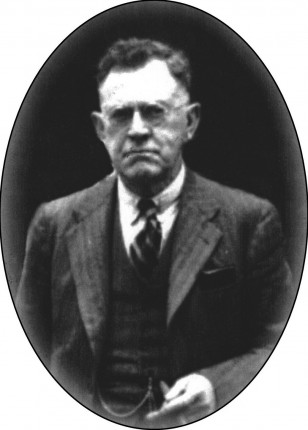
James Washington
In 1915, James Washington bought the hotel and was to be the longest owner. In 1927 he renovated part of it. His wife, Dorothy, had a 1927 Delarge sports car. Every few days she would drive out to Omeo Valley, with the hood down (her bonnet tied on by a scarf) to show off her new car.
On Friday the 13th 1939 Omeo was one of the numerous towns swept by the devastation of Black Friday Curse. The day turned into night and a fire ball hit the town.
It took one building then skipped the next. The Golden Age Hotel was one of the many destroyed. All that was left of the magnificent three-storey Hotel were parts of the brick walls. The rest was rubble and ash. Other buildings to bed lost included the Chemist, Newsagent and Hospital. The fires left a large scar in the district as well as a few deaths. The community never lost their faith and they all helped to rebuild the town.
James Washington was still the hotel owner and decided to rebuild the Golden Age. All the rubble was cleared, the walls were demolished, the bricks were cleaned and stacked and the construction began.
Ted McCormack, Fred Gilmore, George Shields, Alan Atkinson and Jack George were some of the men that worked to rebuild the Golden Age.
Built 1940
The Fifth Golden Age Hotel
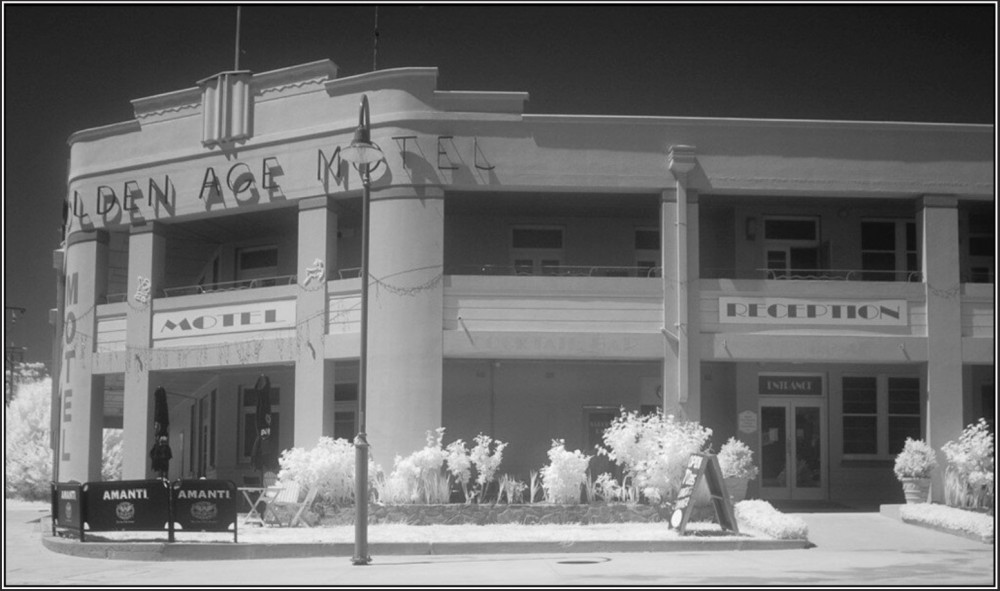
The new building was to be the fifth “Golden Age Hotel”. It wasn’t going to be as magnificent as before but it was designed to carry the tradition of the Golden Age on into the next century. The plans were similar to the first, two floors of the three storey building, including the Ball Room. Every brick used was from the previous building, so if the walls could talk it could take us back one hundred years because that is how old the bricks are. James Washington sold the hotel in 1948 to Mr J.G. Kearney.
It has had a lot of guests stay, a lot of fights fought,many tales told, but the number of kegs drank is something we will never know. Omeo has seen one hundred and forty years of the Golden Age Hotel. This year we celebrate the centenary of the three storey building. Even though it is not the same beautiful structure it once was, the same bricks are still standing. The building might not look the same but the service is the same and you can still get a “bloody good beer”!
All Photos & Information were given to us by Dianne Carroll.
We’d like to thank Dianne Carroll for the use of this information.
All rights reserved. No part of this publication may be reproduced or transmitted in any form or by any means, electronic or mechanical including photography, recording, or any information storage or retrieval system, without permission in writing from the Author.